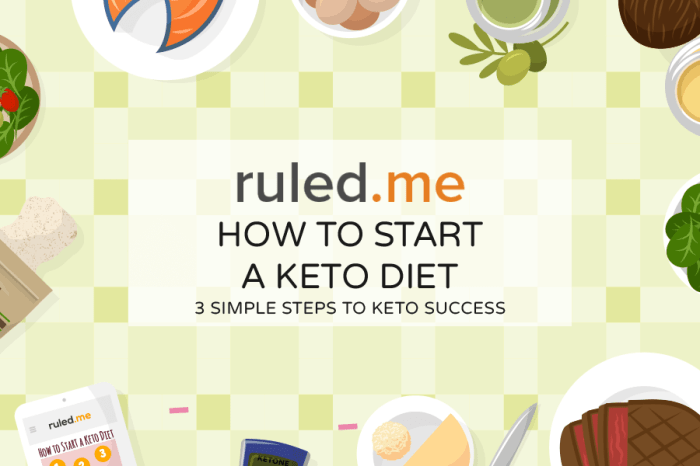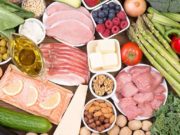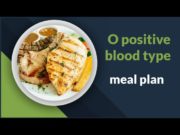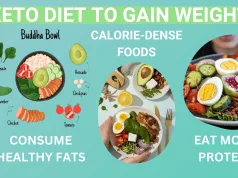Embarking on a ketogenic diet can be a transformative journey for your health and well-being. “How to Start a Keto Diet at Home” provides a comprehensive guide for those seeking to adopt this popular dietary approach. The keto diet, characterized by its high-fat, moderate-protein, and low-carbohydrate intake, has gained significant attention for its potential weight loss benefits and other health advantages. This guide will delve into the fundamentals of the keto diet, including its principles, macronutrient ratios, and food choices. We’ll also provide practical tips for planning your keto journey, including meal plans, pantry staples, and grocery lists. Furthermore, we’ll address common challenges such as keto flu and side effects, offering strategies for managing them effectively. Finally, we’ll explore tips for maintaining a long-term keto lifestyle and maximizing your success.
Whether you’re a seasoned keto enthusiast or a curious newcomer, this guide will equip you with the knowledge and tools you need to embark on your keto journey with confidence. Get ready to unlock the potential of the keto diet and experience its transformative effects firsthand.
Understanding the Keto Diet
The ketogenic diet, often referred to as the keto diet, is a popular weight-loss strategy that involves significantly reducing carbohydrate intake and replacing it with healthy fats. This dietary shift forces your body to enter a metabolic state called ketosis, where it begins to burn fat for energy instead of carbohydrates.
The Fundamental Principles of the Ketogenic Diet
The ketogenic diet is based on the principle of metabolic switching. By drastically reducing carbohydrate intake, you deprive your body of its primary energy source, glucose. In response, your body starts breaking down stored fat into ketones, which are used as an alternative fuel source. This metabolic shift is what gives the keto diet its name.
Macronutrient Ratios in a Keto Diet
The keto diet typically emphasizes a high-fat, moderate-protein, and very low-carbohydrate macronutrient ratio. This typically translates to a breakdown of:
- Fat: 70-80%
- Protein: 15-20%
- Carbohydrates: 5-10%
These percentages are a general guideline, and individual needs may vary based on factors like activity level, body composition, and health goals.
Potential Benefits of Following a Ketogenic Diet
The keto diet has gained popularity due to its potential benefits, including:
- Weight Loss: The keto diet can lead to significant weight loss by promoting fat burning and reducing appetite. This is attributed to the body’s shift to burning fat for energy, leading to a calorie deficit.
- Improved Blood Sugar Control: By reducing carbohydrate intake, the keto diet can help stabilize blood sugar levels, making it beneficial for individuals with type 2 diabetes or prediabetes.
- Reduced Inflammation: Some studies suggest that the keto diet may reduce inflammation in the body, potentially leading to improved overall health.
- Improved Cognitive Function: Ketones have been shown to provide an alternative energy source for the brain, potentially enhancing cognitive function in some individuals.
Foods to Include and Exclude on a Keto Diet
Following a keto diet involves making conscious food choices to adhere to the macronutrient ratios.
Foods to Include
- Healthy Fats: Olive oil, avocado oil, coconut oil, butter, ghee, fatty fish (salmon, tuna, mackerel), avocados, nuts (almonds, walnuts, macadamia nuts), seeds (chia seeds, flaxseeds).
- Protein: Meat (beef, chicken, pork, lamb), poultry, fish, eggs, dairy products (cheese, yogurt, cream).
- Low-Carb Vegetables: Broccoli, cauliflower, spinach, kale, Brussels sprouts, asparagus, green beans, mushrooms, bell peppers, onions.
Foods to Exclude
- Sugary Foods: Desserts, candy, soda, fruit juices.
- Grains: Bread, pasta, rice, cereal.
- Starchy Vegetables: Potatoes, corn, peas.
- Legumes: Beans, lentils, chickpeas.
- Most Fruits: Bananas, apples, oranges, grapes, mangoes.
Planning Your Keto Journey: How To Start A Keto Diet At Home
Starting a keto diet requires careful planning to ensure success. This involves designing a suitable meal plan, stocking your pantry with keto-friendly staples, creating a grocery shopping list, and adjusting the diet for specific dietary needs.
Sample Keto Meal Plan for a Day
A typical keto meal plan should include a balance of healthy fats, moderate protein, and low carbohydrates. Here’s a sample keto meal plan for a day:
Breakfast
- Scrambled eggs with avocado and spinach
- Keto smoothie with almond milk, protein powder, and berries
- Bacon and cheese omelet with a side of sautéed mushrooms
Lunch
- Tuna salad with mayonnaise and lettuce wraps
- Chicken salad with celery and walnuts
- Leftovers from dinner
Dinner
- Salmon with roasted vegetables (broccoli, cauliflower, asparagus)
- Steak with cauliflower mash and green beans
- Chicken stir-fry with low-carb vegetables (broccoli, bell peppers, onions)
Essential Keto-Friendly Pantry Staples
A well-stocked pantry is essential for convenient and easy keto meal preparation. Here’s a list of essential keto-friendly staples:
- Healthy Fats: Olive oil, avocado oil, coconut oil, ghee, butter
- Protein Sources: Eggs, bacon, sausage, chicken breast, ground beef, fish, seafood
- Low-Carb Vegetables: Broccoli, cauliflower, spinach, kale, Brussels sprouts, asparagus, zucchini, bell peppers, onions
- Nuts and Seeds: Almonds, walnuts, pecans, chia seeds, flax seeds
- Other: Bone broth, unsweetened almond milk, unsweetened coconut milk, vinegar, spices
Grocery Shopping List for a Week of Keto Meals
Here’s a sample grocery shopping list for a week of keto meals, based on the meal plan and pantry staples mentioned above:
- Eggs (1 dozen)
- Bacon (1 package)
- Sausage (1 package)
- Chicken breast (2 pounds)
- Ground beef (1 pound)
- Salmon (1 pound)
- Broccoli (1 head)
- Cauliflower (1 head)
- Spinach (1 package)
- Kale (1 package)
- Brussels sprouts (1 pound)
- Asparagus (1 pound)
- Zucchini (2 medium)
- Bell peppers (2)
- Onions (2)
- Almonds (1 bag)
- Walnuts (1 bag)
- Olive oil (1 bottle)
- Avocado oil (1 bottle)
- Coconut oil (1 jar)
- Ghee (1 jar)
- Butter (1 stick)
- Bone broth (1 carton)
- Unsweetened almond milk (1 carton)
- Unsweetened coconut milk (1 can)
- Vinegar (1 bottle)
- Spices (salt, pepper, garlic powder, onion powder, paprika)
Adjusting Your Keto Diet for Different Dietary Needs
The keto diet can be adapted to suit various dietary needs. Here’s how to adjust the keto diet for vegetarians and vegans:
Vegetarian Keto
- Protein Sources: Eggs, cheese, tofu, tempeh, cottage cheese, Greek yogurt
- Low-Carb Vegetables: Same as the regular keto diet
- Healthy Fats: Same as the regular keto diet
Vegan Keto
- Protein Sources: Tofu, tempeh, seitan, lentils (in moderation), nuts, seeds
- Low-Carb Vegetables: Same as the regular keto diet
- Healthy Fats: Same as the regular keto diet
Note: It’s important to consult with a healthcare professional or registered dietitian before starting any new diet, especially if you have any underlying health conditions or dietary restrictions.
Getting Started at Home
You’ve decided to embrace the keto lifestyle, and now it’s time to put your knowledge into action! This section will guide you through the practical steps of implementing keto at home, making it a smooth and enjoyable experience.
Preparing a Simple Keto Meal
The key to keto cooking is understanding the macronutrient breakdown. Aim for meals high in healthy fats, moderate in protein, and low in carbohydrates. Here’s a simple keto meal recipe:
- Ingredients:
- 1 pound ground beef
- 1 cup chopped broccoli
- 1/2 cup chopped onion
- 1/4 cup chopped bell pepper
- 2 tablespoons olive oil
- Salt and pepper to taste
- Instructions:
- Heat olive oil in a large skillet over medium heat.
- Add ground beef and cook until browned, breaking it up with a spoon.
- Add onion and bell pepper and cook until softened, about 5 minutes.
- Stir in broccoli and cook until tender-crisp, about 3-5 minutes.
- Season with salt and pepper to taste.
Making Keto-Friendly Snacks at Home
Cravings can strike at any time, so having keto-friendly snacks on hand is essential. These snacks are both satisfying and keep you in ketosis:
- Hard-boiled eggs: A classic keto snack, rich in protein and healthy fats.
- Avocado slices with salt and pepper: A creamy and filling snack, loaded with healthy fats.
- Keto cheese sticks: A simple snack made with mozzarella cheese and almond flour, baked until crispy.
- Mixed nuts and seeds: A great source of healthy fats, protein, and fiber, but watch your portion sizes.
Incorporating Keto-Friendly Recipes into Existing Meals
Don’t feel like you have to completely overhaul your existing meals. You can easily adapt your favorite recipes to fit the keto diet:
- Swap out high-carb ingredients: Replace pasta with zucchini noodles, rice with cauliflower rice, and bread with almond flour tortillas.
- Add more healthy fats: Incorporate avocados, olive oil, coconut oil, and nuts and seeds into your dishes.
- Focus on protein and vegetables: Make protein the star of your meals, and load up on low-carb vegetables like broccoli, spinach, and cauliflower.
Adapting Favorite Recipes to Fit the Keto Diet
Let’s take a popular recipe like chicken stir-fry and make it keto-friendly:
- Original recipe: Chicken stir-fry with brown rice, broccoli, and soy sauce.
- Keto adaptation: Chicken stir-fry with cauliflower rice, broccoli, and low-sodium soy sauce. Replace brown rice with cauliflower rice, and use a low-sodium soy sauce to reduce carbohydrate intake.
Managing Keto Flu and Side Effects
The ketogenic diet, while effective for weight loss and other health benefits, can sometimes lead to a temporary state known as the “keto flu.” This is a collection of symptoms that can occur during the initial adaptation phase as your body transitions to burning fat for energy instead of carbohydrates.
Keto Flu Symptoms and Mitigation Strategies
The keto flu is usually characterized by flu-like symptoms such as headaches, fatigue, nausea, constipation, and dizziness. These symptoms are typically mild and short-lived, usually lasting for a few days to a week.
- Stay Hydrated: Drinking plenty of water is crucial during the keto flu. Dehydration can exacerbate symptoms. Aim for at least 8 glasses of water per day, and more if you’re physically active.
- Electrolyte Replenishment: The keto diet can lead to a loss of electrolytes like sodium, potassium, and magnesium. Replenishing these electrolytes is crucial for managing keto flu symptoms. You can do this by:
- Adding salt to your food or drinking electrolyte-rich beverages.
- Consuming bone broth, which is naturally rich in electrolytes.
- Taking electrolyte supplements, which are readily available in most health food stores.
- Increase Fat Intake: The keto diet requires a high-fat intake, but some individuals may need to increase their fat intake further during the initial phase to help their body adapt to using fat as its primary energy source.
- Gradually Reduce Carbohydrates: Instead of drastically cutting carbs, some individuals may find it helpful to gradually reduce their carbohydrate intake over a few days or weeks to give their body time to adjust.
- Eat More Fiber: Constipation is a common keto flu symptom. Increasing your fiber intake through high-fiber vegetables and fruits can help regulate your digestive system.
- Rest and Sleep: Fatigue is a common symptom. Getting enough rest and sleep can help your body adapt to the keto diet and manage the keto flu.
Potential Side Effects and Management
While the keto flu is a common temporary side effect, there are other potential long-term side effects to consider.
- Nutrient Deficiencies: The keto diet can restrict certain nutrient-rich foods, such as fruits and whole grains. It’s important to ensure you’re getting enough vitamins and minerals by:
- Eating a variety of keto-friendly foods rich in nutrients.
- Taking a multivitamin to supplement any potential deficiencies.
- Consulting a healthcare professional to monitor your nutrient levels.
- Kidney Stones: The keto diet can increase the risk of kidney stones in some individuals. This is due to the increased excretion of calcium in urine. Staying hydrated and consuming enough potassium can help mitigate this risk.
- Constipation: Constipation is a common side effect of the keto diet, as it restricts fiber intake. Increasing your fiber intake through keto-friendly vegetables and fruits can help alleviate constipation.
- Bad Breath: The breakdown of fat for energy can produce ketones, which can lead to a characteristic “keto breath.” Drinking plenty of water, brushing your teeth regularly, and using mouthwash can help manage this.
Staying Hydrated and Managing Electrolytes
Maintaining adequate hydration and electrolyte balance is crucial for overall health and managing keto flu symptoms.
- Water Intake: Aim for at least 8 glasses of water per day, and more if you’re physically active or experiencing symptoms of dehydration.
- Electrolyte Replenishment: Consume foods and beverages rich in electrolytes like sodium, potassium, and magnesium. Good sources include:
- Coconut water
- Bone broth
- Avocado
- Spinach
- Tomatoes
- Electrolyte Supplements: If you’re struggling to maintain adequate electrolyte levels through diet alone, consider taking electrolyte supplements.
Maintaining Your Keto Lifestyle
You’ve successfully embarked on your keto journey, and now it’s time to focus on sustaining this healthy lifestyle. Maintaining a keto diet isn’t just about following the plan, it’s about making it a sustainable part of your life. This section will guide you on how to stay motivated, track your progress, and make keto a long-term habit.
Finding Keto Recipes and Meal Ideas
A key to long-term success on the keto diet is finding recipes and meal ideas that you enjoy. With a little exploration, you’ll discover a world of delicious and satisfying keto-friendly dishes.
- Keto recipe websites and blogs: Many websites and blogs are dedicated to keto recipes. Some popular options include KetoConnect, Allrecipes, and Diet Doctor. These platforms offer a wide range of recipes, from appetizers and main courses to desserts and snacks.
- Keto cookbooks: There are numerous keto cookbooks available that provide comprehensive meal plans and recipes. These books often offer a variety of options to suit different dietary preferences and skill levels.
- Social media groups: Join online communities and social media groups focused on the keto diet. These groups can be great sources of inspiration, recipe sharing, and support. You can find groups on Facebook, Instagram, and Reddit dedicated to keto living.
Staying Motivated and Consistent
Staying motivated on any diet can be challenging, but with the right strategies, you can stay on track.
- Set realistic goals: Instead of aiming for drastic weight loss, focus on making gradual and sustainable changes. This approach is more likely to lead to long-term success.
- Find a support system: Connect with others who are also following a keto diet. Sharing your experiences and challenges can provide motivation and encouragement.
- Celebrate your successes: Acknowledge your achievements, no matter how small. This positive reinforcement will help you stay motivated.
- Track your progress: Monitoring your progress can be a powerful motivator. Keep a food journal, track your weight, or use a fitness tracker to see the positive impact of your efforts.
- Don’t be afraid to adjust: The keto diet is not a one-size-fits-all approach. If you’re struggling, don’t hesitate to adjust your plan based on your individual needs and preferences.
Monitoring Your Progress and Adjusting Your Plan, How to start a keto diet at home
Regularly monitoring your progress is essential to ensure that the keto diet is working for you.
- Track your weight and body measurements: Weigh yourself regularly and track your waist circumference, hip circumference, and other relevant measurements. This will help you monitor your progress and make adjustments to your diet or exercise routine as needed.
- Pay attention to your energy levels and overall well-being: The keto diet can significantly impact your energy levels and mood. If you experience any adverse effects, consult with your doctor or a registered dietitian.
- Adjust your macros: The ideal macro ratio for each individual may vary. Based on your progress and how you feel, you can adjust your daily intake of protein, fat, and carbohydrates to optimize your results.
Transitioning to a Long-Term Keto Lifestyle
Making keto a sustainable lifestyle requires a shift in mindset and habits.
- Focus on healthy choices: Instead of viewing keto as a temporary diet, focus on incorporating healthy keto-friendly foods into your regular meals and snacks.
- Plan your meals: Planning your meals in advance can help you stay on track and avoid impulsive choices. Prepare healthy snacks and meals to have on hand.
- Find a balance: While keto emphasizes a low-carb approach, it doesn’t mean completely eliminating carbohydrates. Allow yourself occasional treats or cheat meals to avoid feeling deprived.
- Listen to your body: Pay attention to how you feel after eating different foods. If you experience any negative effects, adjust your diet accordingly.
Last Recap

As you embark on your keto journey, remember that consistency, patience, and a personalized approach are key to success. Don’t be afraid to experiment with recipes, adjust your plan as needed, and celebrate your progress along the way. With the right knowledge, resources, and support, you can embrace the keto diet as a sustainable lifestyle choice that supports your overall health and well-being.
Common Queries
Is the keto diet safe for everyone?
While the keto diet is generally safe for most people, it’s essential to consult your doctor before starting any new diet, especially if you have underlying health conditions.
How long does it take to reach ketosis?
The time it takes to reach ketosis varies from person to person, but it typically takes 2-7 days. Factors like your starting carbohydrate intake and individual metabolism can influence this timeframe.
What are some common keto-friendly snacks?
Some popular keto-friendly snacks include nuts, seeds, cheese, hard-boiled eggs, and keto-friendly protein bars.
Can I eat fruit on a keto diet?
While some fruits are lower in carbohydrates, most fruits are not allowed on a strict keto diet. However, you may be able to incorporate small amounts of low-carb berries, such as strawberries and raspberries, in moderation.
Starting a keto diet at home can be a great way to achieve your health goals, but it’s important to do it right. One key aspect is understanding the best way to diet, which involves finding a plan that fits your lifestyle and needs.
You can learn more about the best way to diet and apply those principles to your keto journey. Remember, consistency and proper planning are key to success on any diet, including keto.
Starting a keto diet at home can be simple. Focus on incorporating high-fat, low-carb foods like avocados, nuts, and fatty fish. It’s important to stay hydrated, and while water is always best, some people wonder if diet soda is a good option.
You might be surprised to learn that diet coke does contain caffeine, as you can find out here: is diet coke caffeine free. While it’s low in calories, it’s best to stick to water or unsweetened tea for optimal hydration while on the keto diet.
Starting a keto diet at home is all about embracing high-fat, low-carb foods. You’ll find plenty of resources online, but remember, if you’re diabetic, it’s essential to consult your doctor before making any major dietary changes. For a comprehensive guide on the best diet to lose weight for diabetics , you can find helpful information online.
Once you’ve got the green light from your doctor, you can start experimenting with keto-friendly recipes, such as avocado toast or salmon with roasted vegetables.
























